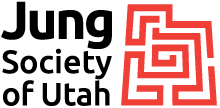The Goddess Notes: Blog Series Introduction
“We are volcanoes. When women offer our experience as our truth, as human truth, all the maps change. There are new mountains.”
– Ursula Le Guin

This is the first in a series of posts honoring Goddess myths. Of course, it’s inspired in part by the rising assertion of feminine power, the growing wave force of desire to tear away and restructure years of corrupt patriarchal dominance. Its aim is not to address political issues, though it might along the journey. Mostly, I’ll hope to throw a net toward the places feminine historical tales interact with present experience, informed by archetype and psychology. The territory of ‘women’s archetypal experience’ feels like an endless ocean, only hardening its amorphous shape where ever we pick up the threads. It brings to mind Empedocles epiphany, “Goddess is a circle whose center is everywhere, and whose circumference nowhere.”

Even so, today’s culture encourages our image of goddess in very specific ways: thin physique, flawless skin and teeth, magazine yoginis, and svelte rock icons. That’s not the perspective of goddess we’ll take here. Instead, we’ll eschew artificially seductive perfection, and revere the abundant, kaleidoscopic offerings of feminine power that emerge from myths: wild, heavy, bright, compassionate, monstrous, sexual, virginal, innocent, dark, fat, bloody and more. The varied identities we seek will provide mystery and holistic perspective, rather than an engagement with relentless striving toward ever-illusive perfection. We’ll think of these myths as tinctures to a social pathology in the throes of death and revision. Of the culture’s persistent demands that create this corrosive climate for feminine perfectionistic striving Marion Woodman, Jungian analyst, informs:
“Addiction to perfection is at root a suicidal addiction. The addict is simulating not life, but death. Almost inevitably a woman addicted to perfection will view herself as a work of art, and her real terror is that the work of art, being so absolutely precious, may in one instant be destroyed. She has to treat herself as a rare piece of Ming porcelain or what Keats described as, “a still unravished bride of quietness,” a “foster child of silence and slow time.”
– Addiction to Perfection

So this series will aim as much as possible to re-member sources of power we have forgotten or denied. We are not dealing specifically with gender, so much as identity characteristics, and which tales bestow a fiery archetypal knowledge whose projection we can incorporate in our imagination in hopes of tapping its timeless powers. Speaking to the feminine ideal, C.G. Jung has said:
“The more the feminine ideal is bent in the direction of the masculine, the more the woman loses her power to compensate for the masculine striving toward perfection, and a masculine ideal state arises, which we shall see, is threatened with an enantriodromia. No path leads beyond perfection toward the future, there is only a turning back, a collapse of the ideal, which would have been avoided by paying attention to the feminine ideal of completeness.”
– Answer to Job
Whether it is Artemis, Innana, Kali, Sophia, or Isis the goddess myths reconnect us to our sense of oneness, and to the collective potential for not only creating new maps, but birthing new worlds.
“It is above all by the imagination that we achieve perception, and compassion, and hope.”
– Ursula Le Guin
~ Andrea Jivan, MA, LMT
Blog Team Member
Jung Society of Utah
Never miss a blog post! Sign up for our newsletter here.
If you enjoyed this blog, please share it via one of the social share buttons below.
